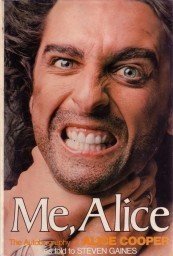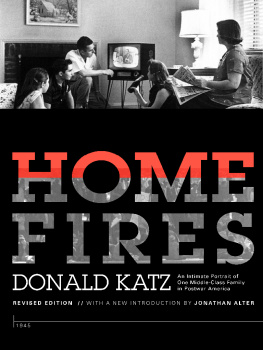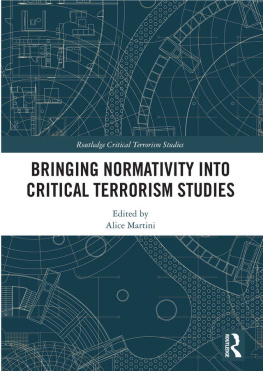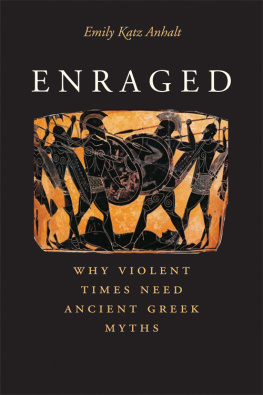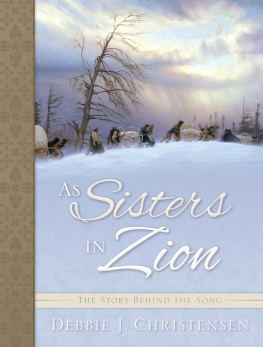Cover photograph: Gimbels department store window, Philadelphia, 1950.
Courtesy of Hadassah, the Womens Zionist Organization of America, Inc.
Published by
S TATE U NIVERSITY OF N EW Y ORK P RESS , A LBANY
2015 State University of New York
All rights reserved
Printed in the United States of America
No part of this book may be used or reproduced in any manner whatsoever without written permission. No part of this book may be stored in a retrieval system or transmitted in any form or by any means including electronic, electrostatic,magnetic tape, mechanical, photocopying, recording, or otherwise without the prior permission in writing of the publisher.
For information, contact
State University of New York Press, Albany, NY
www.sunypress.edu
Production, Laurie D. Searl
Marketing, Michael Campochiaro
Library of Congress Cataloging-in-Publication Data
Katz, Emily Alice, 1975 author.
Bringing Zion home : Israel in American Jewish culture, 1948-1967 / Emily Alice Katz.
pages cm
Includes bibliographical references and index.
ISBN 978-1-4384-5465-8 (hardcover : alk. paper)
ISBN 978-1-4384-5466-5 (ebook)
1. JewsUnited StatesAttitudes toward Israel. 2. Israel and the diaspora. 3. JewsUnited StatesSocial life and customs20th century. 4. IsraelPublic opinion. 5. Public opinionUnited States. I. Title.
| DS132.K38 2015 |
| 956.94052dc23 | 2014007253 |
10 9 8 7 6 5 4 3 2 1
For Thad
ACKNOWLEDGMENTS
I am deeply grateful to a host of individuals and institutions for helping to bring this project to fruition.
I undertook the labor of transforming my dissertation into this book while teaching at the University of California, Irvine, where I have benefited from conversations with colleagues and have been inspired by the intellectual curiosity of my students. As a faculty advisor for the UC-Irvine branch of the Olive Tree Initiative, I have developed rewarding intellectual partnerships and friendships with Daniel Wehrenfennig, Daniel Brunstetter, Arturo Jimenez, Paula Garb, and Susan Seely. Their support has been essential.
Thanks are due to archivists, librarians, and staff at several institutions, including the American Jewish Archives, American Jewish Historical Society, the University of California-Irvine, Hadassah, the Library of the Museum of Modern Art, Yeshiva University Museum, and the Library of the Jewish Theological Seminary. I am particularly grateful to Susan Woodland, senior archivist at the American Jewish Historical Society (formerly of the Hadassah Archives); Barbara Simon (formerly of the America-Israel Cultural Foundation); Kevin Proffitt and Gary P. Zola of the American Jewish Archives; Ruth Goodman and Ruth Schoenberg of the Israeli Dance Institute; and Rhoda Seidenberg and Bonni-Dara Michaels of Yeshiva University Museum for their expert advice and enthusiastic assistance.
This project has been enriched by formal interviews and informal conversations with a number of individuals. I would like to thank the following people for sharing their thoughts and their time with me: Clara Frieder, Barry and Irene Friedman, Ayalah Goren, Judith Brin Ingber, Gila Zalon, and Gideon Paz.
Crucial financial support for the dissertation came from several institutions. A Recent Doctoral Recipients Fellowship and a Dissertation Completion Fellowship from the Andrew W. Mellon Foundation/ACLS Early Career Fellowship Program provided funding in the last phase of dissertation writing and first phase of revisions toward the book manuscript. Support for dissertation writing was also provided by the Foundation for Jewish Cultures Maurice and Marilyn Cohen Doctoral Dissertation Fellowship and a Doctoral Fellowship from the Memorial Foundation for Jewish Culture. I am also grateful to have received a Loewenstein-Wiener Fellowship from the Jacob Rader Marcus Center of the American Jewish Archives. The Charles H. Revson Fellowship in Advanced Jewish Studies provided financial assistance at several points during my graduate studies; I thank the Graduate School of JTS for designating me the recipient of that and other fellowships throughout my time as a graduate student.
A section of chapter 4 was published in my article, Its The Real World After All: The American-Israel PavilionJordan Pavilion Controversy at the New York Worlds Fair, 19641965, in American Jewish History 91, no. 1 (March 2003), and appears here with permission from Johns Hopkins University Press. A portion of chapter 5 first appeared as Introducing Israeli Art: Communal and Critical Encounters in Postwar America, in Images: A Journal of Jewish Art and Visual Culture 3, no. 1 (2009). It is reprinted here with the permission of Brill.
My heartfelt thanks to Professor Jack Wertheimer, my dissertation advisor, whose careful reading, incisive critiques, and refreshing insightswell beyond graduate schoolhave strengthened this book in innumerable ways. David Roskies, Alan Mintz, Shuly Rubin Schwartz, and Barbara Kirshenblatt-Gimblett served, along with Jack, as dissertation committee members, and it was their thoughtful comments that provided a first, crucial bridge from dissertation to book. I am indebted to BKG, too, for including me in the Working Group in Jews, Media, and Religion of the Center for Religion and Media at New York University, where fellow members exemplified the rigorous, creative study of Jewish culture in its myriad forms.
Over the years, I have benefited from the questions and comments of colleagues who encountered my work as panel chairs and audience members at various conferences. I would like to extend a special thank you, however, to Riv-Ellen Prell, Ari Y. Kelman, and Jenna Weissman Joselit, who went above and beyond the call of duty, reading portions of this book along the way and providing helpful comments. Jenna not only offered an in-depth critique of , on Israeli folk dance in America, but also pointed me toward the Hadassah fashion shows as a worthy subject. I thank Margaret Olin and Steven Fine for helping to refine my thinking on the material about Israeli art in America.
I am grateful to SUNY Press, and particularly to James Peltz, for extending me this opportunity and expertly shepherding the project through to publication. Jessica Kirschner and Rafael Chaiken provided excellent editorial support. I am indebted to my anonymous reviewers, whose insights and critiques helped me to see my work with fresh eyes and (I hope) to sharpen the manuscript in important ways. It was a pleasure working with Laurie Searl, production editor at SUNY Press; thank you to Alan V. Hewat for his careful copy editing.
The love and support of my parents, Lenore and Joel Katz, have allowed me every opportunity. They have been eager, thoughtful readers of mine for as long as I can remember, and I treasure their continuing interest in my work. My sister Marisa, intelligent, witty, and encouraging, is also a beloved friend, and reminds me by example that the work we do matters.
My children Lincoln and Willa have enlivened my world immeasurably; I love them beyond reason. I look forward to reading, thinking, talking, debating, and laughing with them both as they grow up.
Thad, my collaborator in all things for twenty years now, has made everything in this life richer, deeper, and brighter. I cannot imagine my life without him and I am boundlessly grateful for his love and support. This book is dedicated to him.



